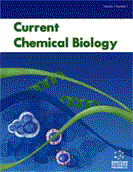Abstract
Microtubules are important biological targets of antitumor chemotherapy. Tubulin polymerization inhibitors (TPIs) hinder polymerization whereas microtubule stabilizing agents (MSAs) promote tubulin polymerization and stabilize microtubules. The goal of enhancing binding affinity through favorable (positive) entropic contributions, a significant part of medicinal chemistry dogma, hinges on a rather simplistic assumption that ligand-protein binding interactions are primarily entropically driven. In turn, individual contributions of enthalpy and entropy to the overall potency of small molecules rarely are determined. Herein, we describe various antimitotic agents whose interactions with tubulin were explored and in which the individual enthalpic and entropic contributions were evaluated. These examples clearly demonstrate that the binding affinities of small molecules with their target proteins are more complex than often articulated; one should exercise caution when rationalizing the relative activity of these molecules and their analogues.
Keywords: entropy, enthalpy, binding afftinity, tubulin, antimitotic agents, Microtubules
Current Chemical Biology
Title: Entropy and Enthalpy in the Activity of Tubulin-Based Antimitotic Agents
Volume: 3 Issue: 1
Author(s): Richard E. Taylor and Erin M. Daly
Affiliation:
Keywords: entropy, enthalpy, binding afftinity, tubulin, antimitotic agents, Microtubules
Abstract: Microtubules are important biological targets of antitumor chemotherapy. Tubulin polymerization inhibitors (TPIs) hinder polymerization whereas microtubule stabilizing agents (MSAs) promote tubulin polymerization and stabilize microtubules. The goal of enhancing binding affinity through favorable (positive) entropic contributions, a significant part of medicinal chemistry dogma, hinges on a rather simplistic assumption that ligand-protein binding interactions are primarily entropically driven. In turn, individual contributions of enthalpy and entropy to the overall potency of small molecules rarely are determined. Herein, we describe various antimitotic agents whose interactions with tubulin were explored and in which the individual enthalpic and entropic contributions were evaluated. These examples clearly demonstrate that the binding affinities of small molecules with their target proteins are more complex than often articulated; one should exercise caution when rationalizing the relative activity of these molecules and their analogues.
Export Options
About this article
Cite this article as:
Taylor E. Richard and Daly M. Erin, Entropy and Enthalpy in the Activity of Tubulin-Based Antimitotic Agents, Current Chemical Biology 2009; 3 (1) . https://dx.doi.org/10.2174/2212796810903010047
| DOI https://dx.doi.org/10.2174/2212796810903010047 |
Print ISSN 2212-7968 |
| Publisher Name Bentham Science Publisher |
Online ISSN 1872-3136 |
 23
23
- Author Guidelines
- Bentham Author Support Services (BASS)
- Graphical Abstracts
- Fabricating and Stating False Information
- Research Misconduct
- Post Publication Discussions and Corrections
- Publishing Ethics and Rectitude
- Increase Visibility of Your Article
- Archiving Policies
- Peer Review Workflow
- Order Your Article Before Print
- Promote Your Article
- Manuscript Transfer Facility
- Editorial Policies
- Allegations from Whistleblowers
- Announcements
Related Articles
-
Effect of PI3K/AKT/mTOR Signaling Pathway on Regulating and Controlling the Anti-Invasion and Metastasis of Hepatoma Cells by Bufalin
Recent Patents on Anti-Cancer Drug Discovery Irreversible LSD1 Inhibitors: Application of Tranylcypromine and Its Derivatives in Cancer Treatment
Current Topics in Medicinal Chemistry Nanoparticles: Functionalization and Multifunctional Applications in Biomedical Sciences
Current Medicinal Chemistry Amyloid Beta Peptide 1-40 Stimulates the Na+ / Ca2+ Exchange Activity of SNCX
Current Neurovascular Research Importance of ABC Transporters in Drug Development
Current Pharmaceutical Design Xanthone Derivatives: New Insights in Biological Activities
Current Medicinal Chemistry Gene Therapy and Biologic Therapy with Interleukin?4
Current Gene Therapy Novel Homeodomain Transcription Factor Nkx2.2 in the Brain Tumor Development
Current Cancer Drug Targets Cell-Penetrating Peptide-Mediated Therapeutic Molecule Delivery into the Central Nervous System
Current Neuropharmacology Matrix Metalloproteinases: New Routes to the Use of MT1-MMP As A Therapeutic Target in Angiogenesis-Related Disease
Current Pharmaceutical Design Recent Progress in Delivery of Therapeutic and Imaging Agents Utilizing Organic-Inorganic Hybrid Nanoparticles
Current Drug Delivery The Role of Glioma Microenvironment in Immune Modulation: Potential Targets for Intervention
Letters in Drug Design & Discovery Application of Glutathione as Anti-Oxidative and Anti-Aging Drugs
Current Drug Metabolism Cancer Stem Cells Switch on Tumor Neovascularization
Current Molecular Medicine Targeting EZH2 for Cancer Therapy: Progress and Perspective
Current Protein & Peptide Science Isomers of 4-[<sup>18</sup>F]fluoro-proline: Radiosynthesis, Biological Evaluation and Results in Humans Using PET
Current Radiopharmaceuticals Elucidation of Abnormal Extracellular Regulated Kinase (ERK) Signaling and Associations with Syndromic and Non-syndromic Autism
Current Drug Targets Discovery of Small Molecules that Target Autophagy for Cancer Treatment
Current Medicinal Chemistry Angiotensin II Type 1 Receptor Antagonist as an Angiogenic Inhibitor in Urogenital Cancer
Reviews on Recent Clinical Trials Effect of Salinomycin on Expression Pattern of Genes Associated with Apoptosis in Endometrial Cancer Cell Line
Current Pharmaceutical Biotechnology

















.jpeg)








